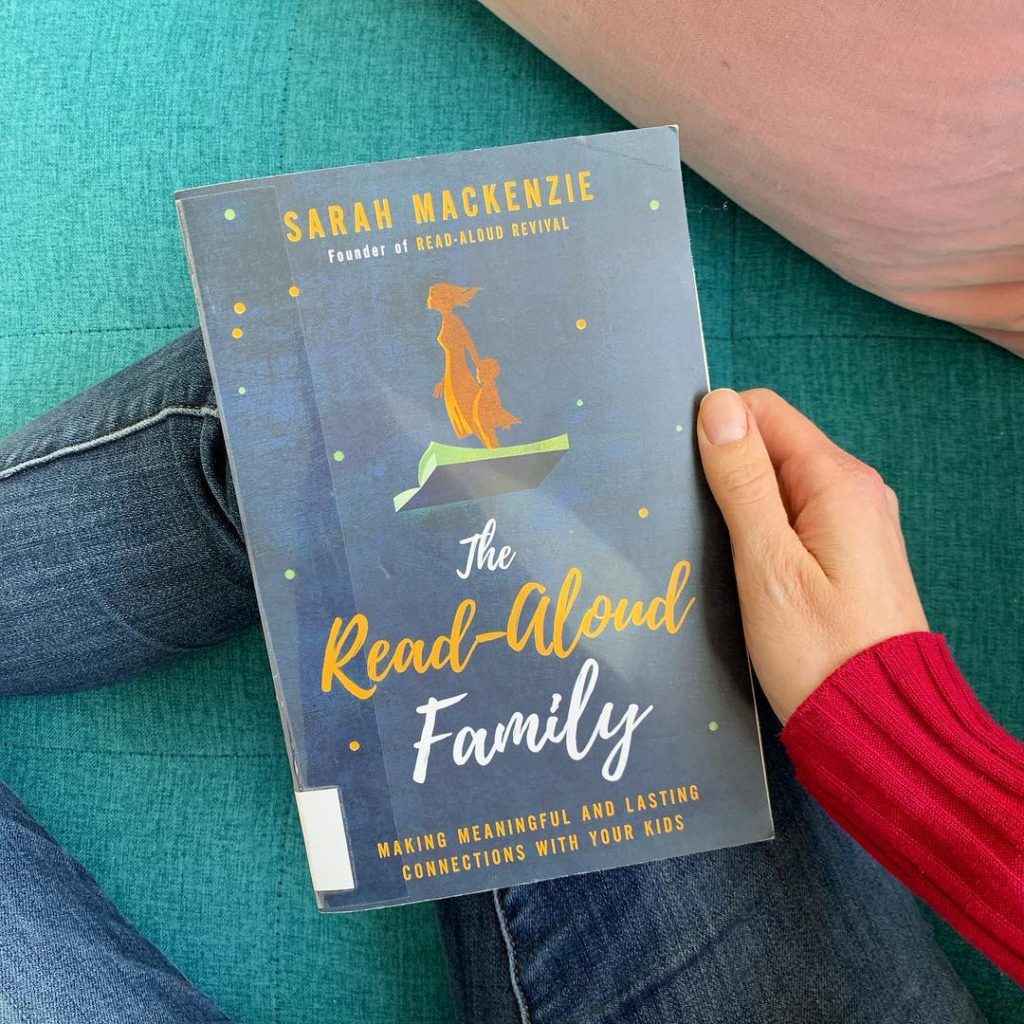I heard about The Read-Aloud Family a while ago because I follow the author, Sarah Mackenzie, who does the Read Aloud Revival podcast. If you’re interested in reading out loud to your kids more (or even interested in WHY you should be interested, ha), her podcast is a great place to start.
Before I started the book, I wondered if it would be useful to me since, as the owner of a children’s book subscription service, I already highly value reading to my kids and do spend a lot of time doing it. I have to say that I still found it very motivating and inspiring!

I think this book would be helpful for any parent, since it’s packed with ideas and encouragement for making reading out loud actually happen. So I thought I’d share a few of the key things I learned— that way you can see if you’d like to read it yourself! (Or, you know, just read this summary and call it good… that works too!)
ABOUT THE BOOK
The Read Aloud Family is divided into three sections. The first one covers why reading aloud to your children is important. The second section is more of a tool-kit on how, exactly, to make reading aloud happen, and also how to make it fun and meaningful. Finally, the third section is all book suggestions, divided up by ages (0-3, 4-7, 8-12, and teenagers).
The most helpful parts for me were the first two sections, since we still mostly read in Spanish here at home, but I can see how her book lists are GOLD. I’m definitely planning on using them as we incorporate more English books into our read aloud time!
THREE GREAT TAKEAWAYS FROM THE READ ALOUD FAMILY
#1. If you want your family to be a reading family, you have to have books in your home. Mackenzie says that we send a clear message to our kids when we spend some of our hard-earned cash on books: they matter, they’re a part of who we are, and they’re important to our family.
She recommends gifting your kids books for holidays and birthdays, as well as giving them a book allowance to grow their collection. I love that last part, because some of my best childhood memories are of getting to go to Barnes & Noble after a long day of shopping in El Paso, TX (3 hours from my hometown in Chihuahua, Mexico) to pick out a book to read on the drive home.
#2. How to help books compete with screen time. Mackenzie compares a book to a watermelon (juicy, sweet, refreshing), and screen time to candy (possibly more tempting, but ultimately much less nourishing). Most kids love eating sticky, delicious watermelon, but if they’re offered a piece of candy, they’ll choose that almost every time.
So she recommends that instead of setting certain times of day when screens are not an option, set times of day when screens are. This makes screen time the exception in your home, not the rule, which frees up the rest of the day for other things (including reading!). As she says, it’s so much easier to enjoy the watermelon when we aren’t tempted by the candy.
#3. How to choose great books: the 3 question test. I loved this part because I often get asked how I choose books for Sol Book Box, and basically my answer is that I use her 3 question test (before I even knew about it!).
Here are the things you should pay attention to as you figure out if a book is worth reading.
- Images: Can you picture the scene in your mind’s eye? This works with illustrations, of course, but even if the book is just text, it should be capable of transporting you so you can see it in your own imagination.
- Vocabulary: Do the words seem rich and varied? No dumbed-down books, please! And no badly translated books, either!
- Curiosity: Are you interested in finding out what happens next? If not, it’s probably not worth reading.
Whew! As you can see from this mega-post, I thought this book was really helpful. There’s a lot more I could have shared, but hopefully this summary gives some useful ideas to encourage you to read aloud to your kids!
P.S. If you’d rather listen than read (or don’t have time to read), The Read Aloud Family also comes in audiobook form (and is narrated by the author!).
